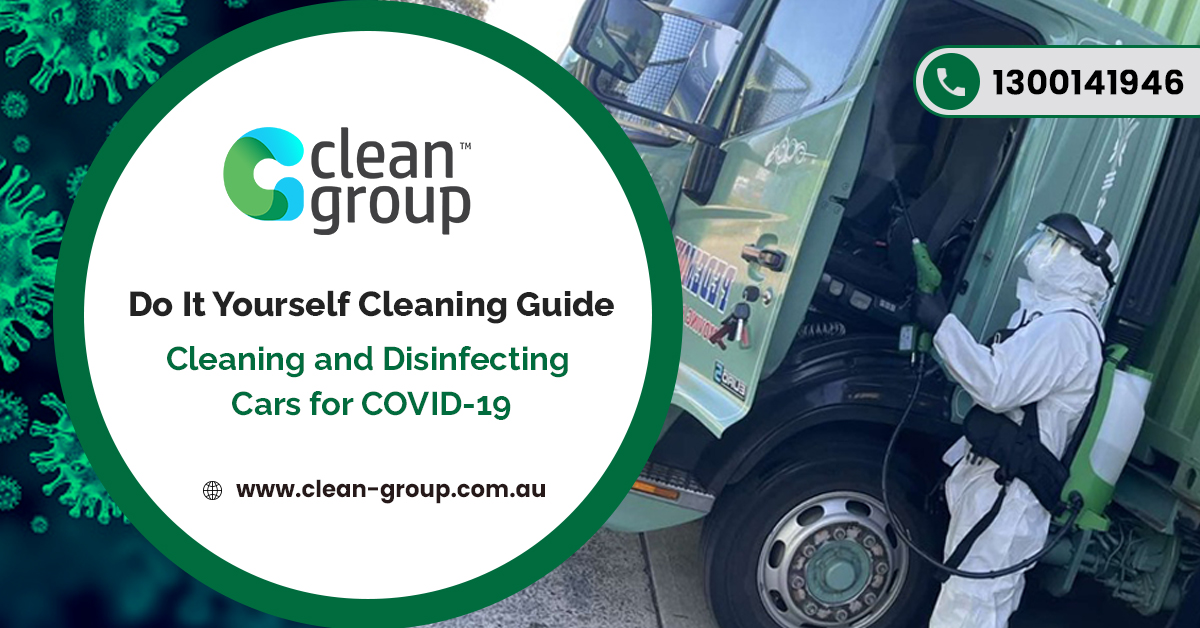Disinfecting your hands with an alcohol-based hand sanitiser or water and soap has been vital in preventing the spread of the omicron variant of COVID-19. There has been a vast focus in the media concerning disinfecting our businesses and homes.
The virus can survive for hours or days on many surfaces, so it only makes sense that you need to disinfect these places regularly.
Most people don’t adequately disinfect commonly touch surfaces where the virus may be hiding, even though they exit and enter the automobile multiple throughout the day.
It is imperative to keep your vehicle clean to stop COVID-19 from spreading, especially if you’re a taxi company driver or rideshare driver.
The many types of surfaces and crevices plus openings make disinfecting an automobile a bit more challenging than Covid-19 cleaning a home.
Vehicle surfaces can also wear down if cleaned too often because those areas cannot withstand the constant onslaught of hardcore cleaning solutions.
Which Cleaning Detergent Is Safe for Car Sanitizing?
According to Work Safe Australia, some of the most effective products to kill the COVID-19 virus are alcohol solutions, disinfectant soap, and water. The alcohol solution should contain at least 70% Isopropyl alcohol, but 99% is recommended for full disinfecting effects.
Ammonia, hydrogen peroxide, and bleach are effective at killing the coronavirus but may discolour fabrics or cause damage to leather and upholstery. These chemicals are better suited for restaurants or commercial kitchen environments with sufficient ventilation.
Be careful not to get any of the above chemicals on your skin, as they could burn or cause irritation. Using these chemicals in a well-ventilated area is crucial to avoid indoor air pollutants caused by using these products.
According to Work Safe Australia, natural products like vodka, Teatree oil, and vinegar have proven ineffective against the COVID-19 virus. When cleaning infotainment or other touch screens, take care and do not use aggressive cleaners.
It would be best if you used a dampened soft cloth or screen wipes to perform a clean of any touch screen in your vehicle. Disinfecting and cleaning can be made easier plus safer if you place a wipeable cover on your automobile’s electronics!
Cleaning and Disinfecting Solutions
Automobiles are high traffic areas and require thorough cleaning to remain hygienic or sanitary. Remember, when cleaning your car, it’s vital to wear personal protective equipment (PPE) to safeguard you from the virus.
This personal protective equipment must include safety eyewear to protect from chemical splashes and disposable gloves to keep hands clean. If you see any signs of visible contamination, you should wear a disposable apron while cleaning the car.
You must clean your vehicle immediately after an individual with a suspected or confirmed coronavirus case has been in it.
It is also good to note that disinfectants require sufficient contact time to kill the coronavirus effectively. You can read the manufacturer’s instructions on the label to learn more about the contact time. In most cases, if you leave the disinfectant on for 10 minutes, that should be enough to kill all traces of the virus.
Using Disinfectants Safely
There are a few rules to follow when cleaning your car with detergents or disinfectant solutions. If you don’t follow these rules, things may be catastrophic because of these solutions’ chemical reactions.
Below are some basic guidelines to follow; these include but are not limited to:
- When cleaning with a damp cloth, spray it directly to make it wet and avoid generating a mist that you could potentially breathe in
- Do not mix two different types of disinfectant solutions
- Always wear PPE when using disinfectants or diluting products; that includes gloves (elbow length if possible) and eye protection
- Make sure that all disinfectants are stored securely and out of reach of children; these chemicals are hazardous and can cause sickness or death if ingested.
By following the above steps, you can be safe when cleaning your car or storing your disinfectants. Always perform best practices when dealing with the COVID-19 virus for the sake of your loved ones.
What You Need to Clean Your Car
It would be best if you gathered a few supplies in addition to the cleaning solutions required while you are preparing to disinfect your motor vehicle.
If you don’t have some of these items, you could swap them out for an alternative, although the main things you require are a disinfectant and personal protective equipment.
Below are some of the items required during an extensive COVID-19 car clean:
- Leather conditioner, if you have leather seats
- Glass/window cleaner for disinfecting glass surfaces
- Brush for scrubbing stains
- Disposable work clothes or gowns that can be washed immediately afterwards
- Bucket for mixing soap plus water
- Microfiber cloths for drying and cleaning
- Screen wipes
- Vacuum
- Mask
- Gloves
How to Sanitise a Vehicle
In this section, we discuss the steps to clean your car thoroughly. It is imperative to remember to keep your windows and doors open as some cleaning solutions may irritate the throat and eyes.
You should wear a face mask at all times to reduce the risk of potential virus exposure, chemical inhalation and to protect yourself from dust. Make sure to wash your hands and put on a disposable pair of gloves before cleaning the car.
Remove all the floors mats, shake them out, and then disinfect them with a disinfecting solution. The carpets can be left out to dry while you continue cleaning the rest of the car.
Next, perform a thorough automobile vacuum, removing debris and dirt from all the tiny crevices.
If you plan to clean the seat with a microfiber cloth, it is recommended to use a soapy solution to wipe down the upholstery or leather. Remember not to saturate the material, as it may lead to water seepage and later into a mould.
One of the best ways to deep clean a car’s interior upholstery is to use a steam cleaner if you can get your hands on one. Not only does this kind of cleaner kill the COVID-19 virus, but it also leaves your fabric seats looking brand new.
Next, dip your microfiber cloth in an Isopropyl solution and start cleaning all the high touch surfaces, such as levers, handles, knobs, and steering wheel.
Effectively killing the virus requires that the surface remain wet with the cleaner for several minutes. Be sure to use at least 70% Isopropyl when disinfecting areas inside your vehicle.
Once the automobile is disinfected, you can start by disinfecting the windows and mirrors. It’s good to note that traditional window cleaner does not kill the COVID-19 virus, so be sure to replace your conventional cleaner with an alcohol-based solution.
When your car clean is complete, make sure to clean any personal protective equipment and dispose of gloves used during the process. Immediately after disposing of the gloves, wash your hands for a minimum of 30 seconds.
Vehicle Cleaning Checklist
The vast spaces where germs lurk in a vehicle make it a breeding ground for viruses. Here is an extensive checklist so you don’t miss a spot where the coronavirus could be sitting.
- Windshield
- Cup holders
- Cell phone and GPS mounts
- Floor mats
- Seat adjustment handles
- Grab handles
- Infotainment and touch screen systems
- Moonroof, sunroof, and controls
- Buckles and seat belts
- Release lever and parking brake
- Buttons and dome light
- Seat upholstery
- Armrests
- Glove box
- Centre console controls
- HVAC vents
- Climate control unit and buttons on the radio
- Grab areas and trunk handle
- Dashboard
- Rear-view mirror
- Side windows
- Door panels and handles, including buttons
- All levers, including windshield wiper, light controls, and turn signal
- Start button or ignition area
- Key and remote
- Steering wheel
Cleaning your car depends on the areas mentioned above; you may be put at risk without washing these places.
Disposable of PPE or Cleaning of Materials
When cleaning personal protective equipment or reusable clothes, using the warmest possible setting with traditional washing detergent is vital. It’s important to not shake out the items before placing them in the wash, as this could spread the coronavirus and lead to you breathing it in.
Be sure to wear disposable gloves when you handle covers, PPE, and clothing that comes in contact with a potentially infected surface. When you have removed your disposable gloves, make sure to wash your hands for at least 30 seconds to avoid further contamination.
Non-washable PPE items, such as safety goggles, should be cleaned with detergent solutions, then disinfected and allowed to air dry. If there is any streak or residue build-up after cleaning these items, you should first let them dry and then wipe them clean with a soft cloth plus an Isopropyl solution.
Using a Professional Cleaning Service
If you don’t have all the required cleaning detergents to perform the task of eliminating COVID-19 from your vehicle, you could always take the automobile to a professional cleaning service.
These companies have the experience and knowledge of how to clean a car sufficiently and know what chemicals are best to use.
Conclusion
Like cleaning the surfaces in your workplace and home or washing your hands, it’s crucial to sanitise your car to remain protected from the coronavirus; by maintaining a level of cleanliness in your automobile, you can prevent the spread of the virus and keep your family safe.
Soap and water are not effective for killing the virus, so remember to use a recommended disinfectant to clean your car. Be sure to use cleaning products that are safe for the interior of a vehicle but also strong enough to leave all surfaces coronavirus free.
With the information in this article, we hope you can complete the cleaning of your vehicle at home!

